Smart sizing tool for electronic ankle bracelet
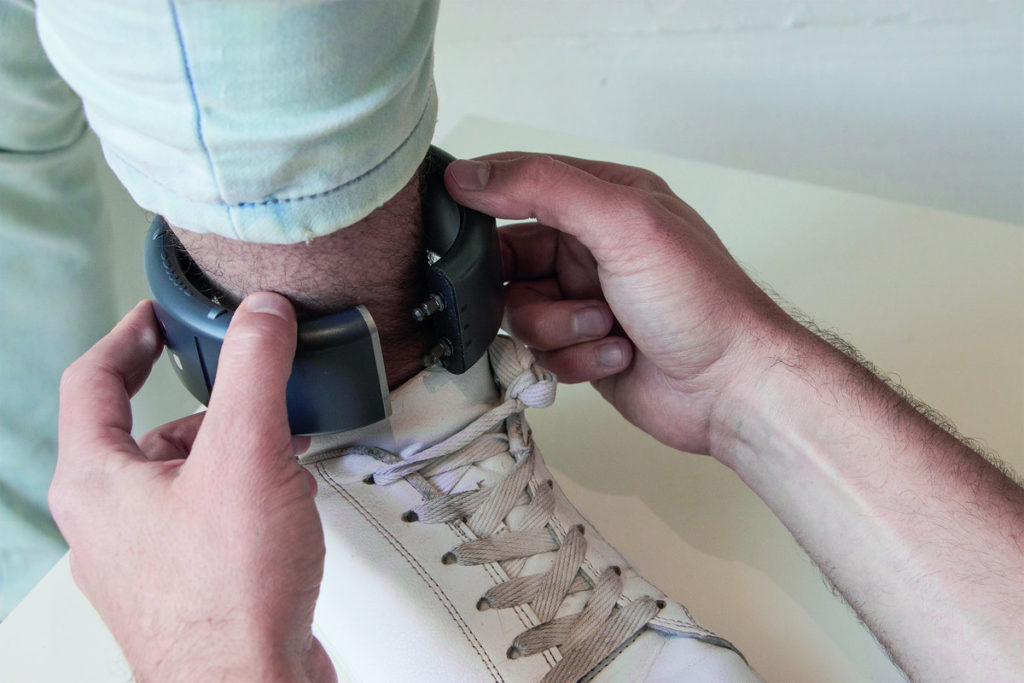
Partner: Geosatis
Motivation
Geosatis is in the process of developing an ankle bracelet for offender rehabilitation. The bracelet sizing system aims to provide a comfortable but secure fit to the ankle for a large range of ankle shapes and sizes. Their previous efforts in defining the different sizes were based on an anthropometric study of a sample of 100 Swiss subjects. However, several challenges remain, e.g. accommodating extra-large ankle widths and providing subjects at the border of two sizes with a comfortable bracelet.
Problem definition
The current model is based on 2D data from a small dataset. The standardised oval shape, in combination with this limited data results in too many instances of misfit between user and product.
Within Fieldlab UPPS, Geosatis and TU Delft want to collaboratively research new 3D anthropometry techniques for evaluating and optimizing bracelet sizing systems with specific constraints on security and comfort. The research question was:
“What are the optimal product dimensions for different sizes ankle bracelets to accommodate large part of the population?”
Activities and task division
The first task of the Fieldlab was to analyse a 3D database of more than 2000 subjects, concerning ankle dimension variations. The main dimensions were defined as: minimum ankle circumference (M2), ankle circumference around medial malleoli (M1), ankle width, ankle length and height of M2, see figure 1. All data was sorted and combined in a data file (see knowledge development & dissemination).
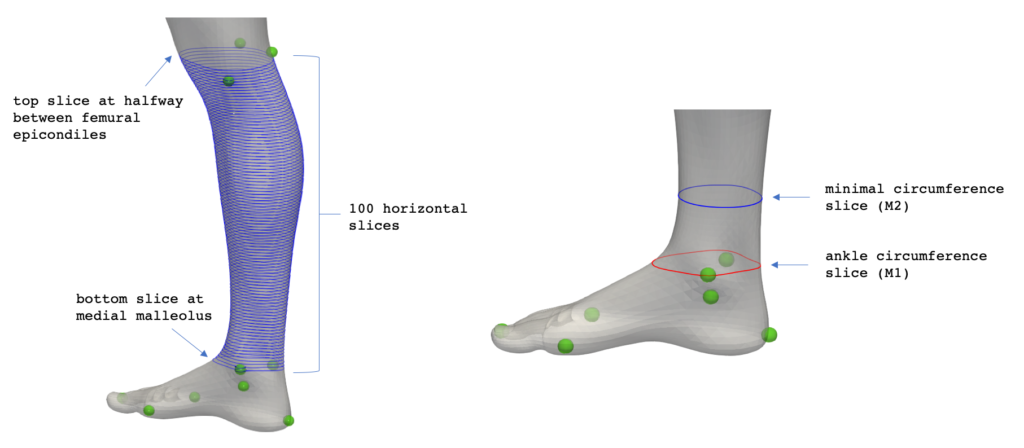
After the anthropometric study, a first version of a sizing tool was built, in which bracelet sizes and boundary conditions for fit margins could be entered to find the subject size measurement distribution. In this version, there were still many discrepancies between reality and the modeled fitting. That is why several iterations were done to improve the sizing tool (figure 7). The final tool, besides ankle circumference, length, and width, also accounted for the tilt angle of the tibia and a safety tolerance for removal was added. However, a study on removability of the bracelet revealed that the considered range does not come close to the circumference of the heel.
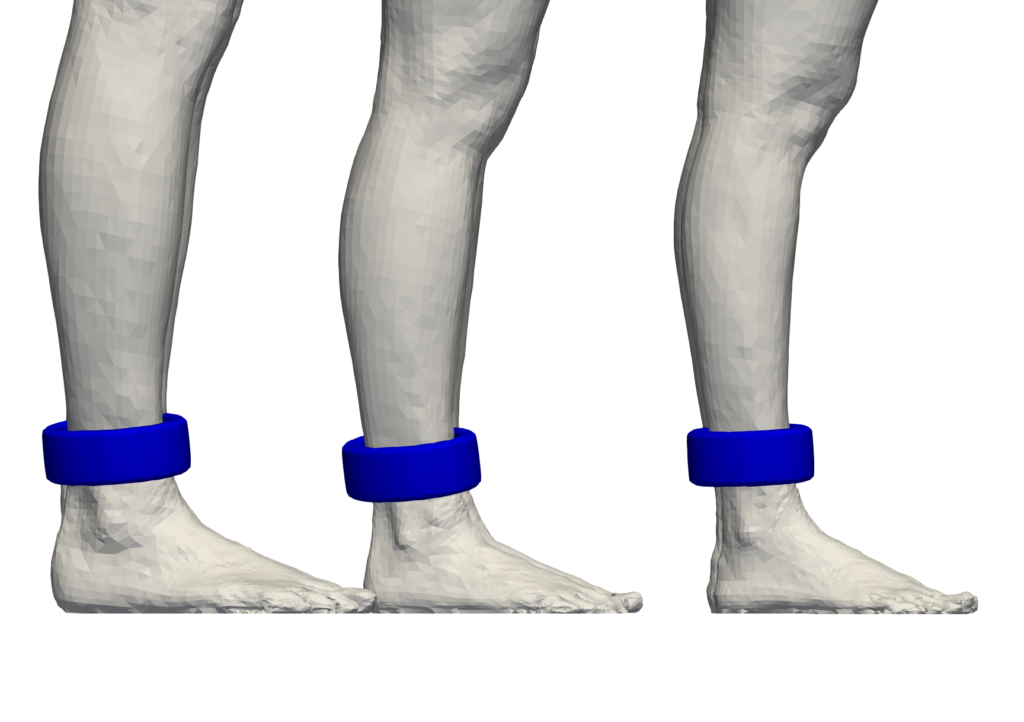
The last part of the project was spent on validation testing. When entering the details of the current bracelet sizes, the size distribution did not compare to the order ratios of the bracelets. Therefore, a series of validation studies was performed. First, 3D printed bracelet samples were tested on human subjects (see picture). Their ankle circumference was measured, as well as the minimum distance between the ankle and the bracelet of the best-fitting size. It turned out that the optimal perceived fit only allows for maximum 4 mm. A minimum distance of >5 mm was considered too wide. This information was adjusted in the sizing tool as a minimum distance range. Besides that, four ‘extreme’ ankles of the 3D database were 3D printed and physically tested with the bracelets samples (see picture). The minimum distances were compared between digital and physical fitting. These tests revealed good similarity, although the position of the bracelet, in combination with the comfort element, in some cases is different from the simulated position. The physical tests also revealed a large influence of the shape of ankle cross-sections on the perceived fit. Many ankles are a lot longer than they are wide, making the bracelet feel large, while there is no more margin in the width.
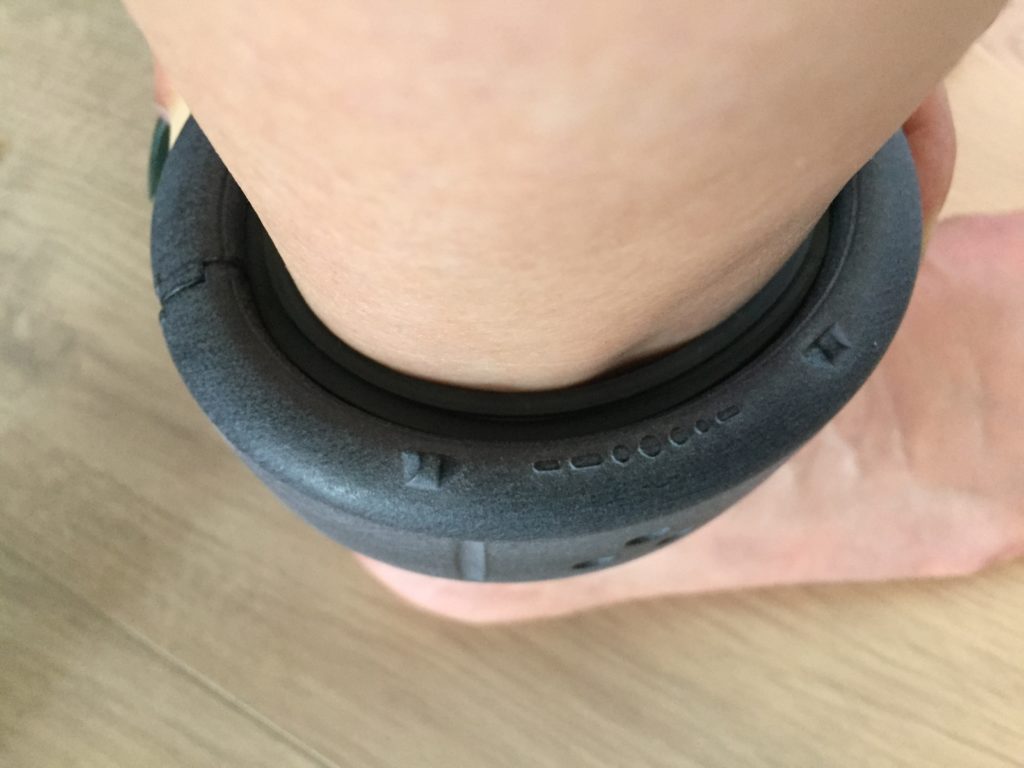
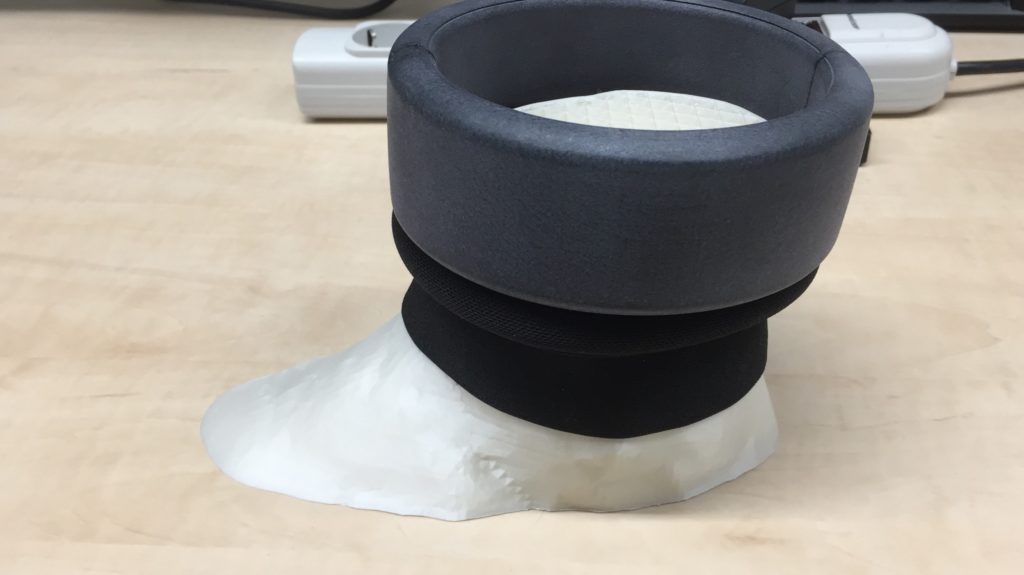
Results and conclusions
The result of the project was the creation of an interactive sizing tool, that allows you to easily adjust margins, user (sub)populations and dimensions. By selecting a 2-dimensional product size in the plot, the percentage of users is displayed for that size.
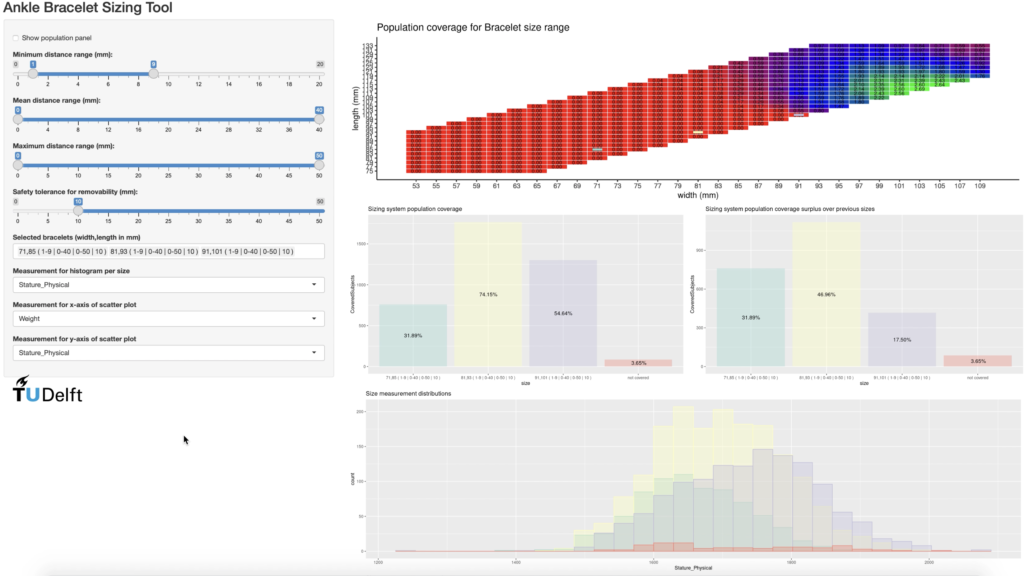
Although the tool is validated with physical comparisons, the user ratio between the different (currently used) sizes still shows some discrepancies with the order rates of GEOSATIS’s bracelets. It is hypothesized that this can be explained by the method of donning, as performed by the service providers. To assess this hypothesis, this donning procedure (and thus the exact fit positioning of the bracelets) should be observed in different locations. The height, procedure (with or without comfort element) and preferred/acceptable margin could explain the discrepancies with the preset parameters of the computer model.
Lastly, a user study is necessary to know the ratio of personal demographics, such as gender, race, age, and BMI. These factors could influence the distribution of sizes of the bracelets.


